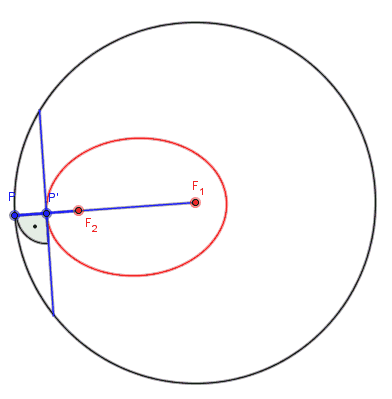Feynman’s Lost Lecture on:
[Wikipedia]
[Google]
[Amazon]
''Feynman's Lost Lecture: The Motion of Planets Around the Sun'' is a book based on a lecture by

Richard Feynman
Richard Phillips Feynman (; May 11, 1918 – February 15, 1988) was an American theoretical physicist. He is best known for his work in the path integral formulation of quantum mechanics, the theory of quantum electrodynamics, the physics of t ...
. Restoration of the lecture notes and conversion into book form was undertaken by Caltech
The California Institute of Technology (branded as Caltech) is a private university, private research university in Pasadena, California, United States. The university is responsible for many modern scientific advancements and is among a small g ...
physicist David L. Goodstein and archivist Judith R. Goodstein.
Feynman had given the lecture on the motion of bodies at Caltech on March 13, 1964, but the notes and pictures were lost for a number of years and consequently not included in ''The Feynman Lectures on Physics
''The Feynman Lectures on Physics'' is a physics textbook based on a great number of lectures by Richard Feynman, a Nobel laureate who has sometimes been called "The Great Explainer". The lectures were presented before undergraduate students ...
'' series. The lecture notes were later found, but without the photographs of his illustrative chalkboard
A blackboard or a chalkboard is a reusable writing surface on which text or drawings are made with sticks of calcium sulphate or calcium carbonate, better known as chalk.
Blackboards were originally made of smooth, thin sheets of black or da ...
drawings. One of the editors, David L. Goodstein, stated that at first without the photographs, it was very hard to figure out what diagrams he was referring to in the audiotapes, but a later finding of his own private lecture notes made it possible to understand completely the logical framework with which Feynman delivered the lecture.
Overview

''You can explain to people who don't know much of the physics, the early history... how Newton discovered... Kepler's Laws, and equal areas, and that means it's toward the sun, and all this stuff. And then the key - they always ask then, "Well, how do you see that it's an ellipse if it's the inverse square?" Well, it's God damned hard, there's no question of that. But I tried to find the simplest one I could.''In a non-course lecture delivered to a freshman physics audience, Feynman undertakes to present an elementary, geometric demonstration of Newton's discovery of the fact that
Kepler
Johannes Kepler (27 December 1571 – 15 November 1630) was a German astronomer, mathematician, astrologer, natural philosopher and writer on music. He is a key figure in the 17th-century Scientific Revolution, best known for his laws of p ...
's first observation, that the planets travel in elliptical orbits, is a necessary consequence of Kepler's other two observations.
The structure of Feynman's lecture:
* A historical introduction to the material
* An overview of some geometric properties of an ellipse
* Newton's demonstration that equal areas in equal times is equivalent to forces toward the sun
* Feynman's demonstration that equal changes in velocity occur in equal angles in the orbit
* Feynman's demonstration, using techniques of Ugo Fano
Ugo Fano (July 28, 1912 – February 13, 2001) was an Italian American physicist, notable for contributions to theoretical physics.
Biography
Ugo Fano was born into a wealthy Jewish family in Turin, Italy. His father was Gino Fano, a professo ...
, that these velocity changes imply that the orbit is elliptical
* Discussion of Rutherford's experiments with scattering of alpha particle
Alpha particles, also called alpha rays or alpha radiation, consist of two protons and two neutrons bound together into a particle identical to a helium-4 nucleus. They are generally produced in the process of alpha decay but may also be produce ...
s, and the discovery of the atomic nucleus
The atomic nucleus is the small, dense region consisting of protons and neutrons at the center of an atom, discovered in 1911 by Ernest Rutherford at the Department_of_Physics_and_Astronomy,_University_of_Manchester , University of Manchester ...
The audio recording of the lectures also includes twenty minutes of informal Q&A at the blackboard with students who had attended the lecture.
In the 1964 lecture, Feynman presents an elementary geometric proof (i.e., in the style of Isaac Newton's 1687 ''Philosophiæ Naturalis Principia Mathematica
(English: ''The Mathematical Principles of Natural Philosophy''), often referred to as simply the (), is a book by Isaac Newton that expounds Newton's laws of motion and his law of universal gravitation. The ''Principia'' is written in Lati ...
'') of Kepler's first law. Feynman's geometric proof relies on the concept of a hodograph. Feynman reported that his motivation for presenting a proof different from Newton's was that he had failed to understand Newton's original proof in the ''Principia''. A proof with ideas similar to Feynman's had already been published by James Clerk Maxwell
James Clerk Maxwell (13 June 1831 – 5 November 1879) was a Scottish physicist and mathematician who was responsible for the classical theory of electromagnetic radiation, which was the first theory to describe electricity, magnetism an ...
in his book ''Matter and Motion'' (1877).http://arxiv.org/pdf/0910.4807 ( WP:PREPRINT)
References
1996 non-fiction books Physics books Astronomy books Works by Richard Feynman Books of lectures American non-fiction books W. W. Norton & Company books {{physics-book-stub